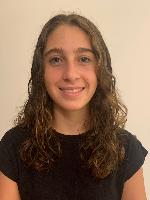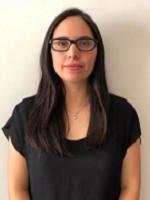

Beyond Words: A Magic Carpet to Equity |
Participate and share : Poster
Luis Márquez Luciana Abbud Valentina Abbud Sofía Salazar Itzel Rodríguez
Students were concerned about the inequity for visually impaired persons to enjoy literature. Using design thinking methodology, they built a website where visually impaired people access different kinds of literature and listen to it. Students developed reading aloud skills to transmit the real sense and emotion of the literature pieces.
| Audience: | Teachers, Library media specialists, Principals/head teachers |
| Skill level: | Beginner |
| Attendee devices: | Devices not needed |
| Topic: | Equity and inclusion |
| Grade level: | 9-12 |
| Subject area: | Language arts |
| ISTE Standards: | For Students: Creative Communicator
|
| Additional detail: | Student presentation |
Students will share how they touched visually impaired persons´ lives. During the presentation, they will show how Design Thinking methodology lead them to create a website where visually impaired persons will find read aloud literature masterpieces recordings letting the listeners experience this art in a totally different way.
Feedback from the website users will evidence the impact that this creative innovation has had in their enjoyment of literature.
Students will communicate how this alive website can be enhanced by including different genders and even languages. They are looking for the audience to contribute to this invaluable effort.
https://palabrasvoladoras.weebly.com
Camps, A. (2012). “La investigación en didáctica de la lengua en la encrucijada de muchos caminos.” Revista iberoamericana de educación. (59). 23-41.
Cassany, D. (2006). “Leer desde la comunidad”. Tras las líneas. Sobre la lectura contemporánea. Barcelona: Anagrama. 21-43.
Colomer, T. (2002). “La enseñanza y el aprendizaje de la comprensión lectora”. El aprendizaje de la comunicación en las Aulas. España: Paidós. 118-132.
De la Garza, Y. (2001). “La organización del trabajo escolar por proyectos: La elaboración de una revista escolar”. La enseñanza del español en escuela primaria. México: UPN, 31-39.
Latorre, A. (2013). La investigación acción. Conocer y cambiar la práctica educativa. México: Graó. 39-52.
Pérez, H. (2000). “La comprensión lectora”. En. Comprensión y producción de textos. México: Nueva editorial Iztaccihuatl.75-90.
Pinzas, J. (2006). “Aspectos de la comprensión lectora que se enseña en la educación secundaria”. Guía de estrategias metacognitivas para desarrollar la comprensión lectora. Perú: Pueblo Libre.
Solé, I. (2000). “La enseñanza de estrategias de comprensión lectora”. En La adquisición del a lectura y la escritura en la escuela primaria. Lecturas. México: SEP. 125-145.
Solé, I. y A. Teberosky, (1990). “La enseñanza y el aprendizaje de la alfabetización: una perspectiva psicológica”. En. Desarrollo psicológico y educación. 2. Madrid: Alianza. 186-461.
Solé, I. (2001). (Ayudas) Antes, durante y después de la lectura. En. https://www.youtube.com/watch?v=VKbD0mDWSac Vídeo obtenido y consultado el 3 de mayo de 2020.

I have a Bachelor’s degree in Finances and a Master's degree in Family Sciences. I’ve been involved in education for seven years. My experience in education comes from being an academic coordinator and teacher from middle school to postgraduate students from different backgrounds and interests and in different institutions from different locations in Mexico. These granted me the opportunity to meet teachers with very different training, styles and talents and I’ve learned that generating the proper environment for them to share their experience and knowledge with colleagues, generates a learning culture and a good attitude towards improvement and to try different things in class.



